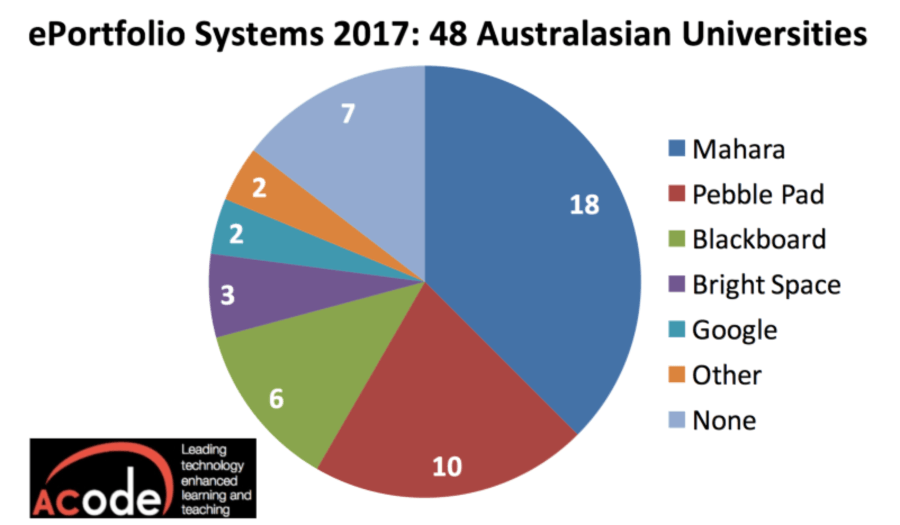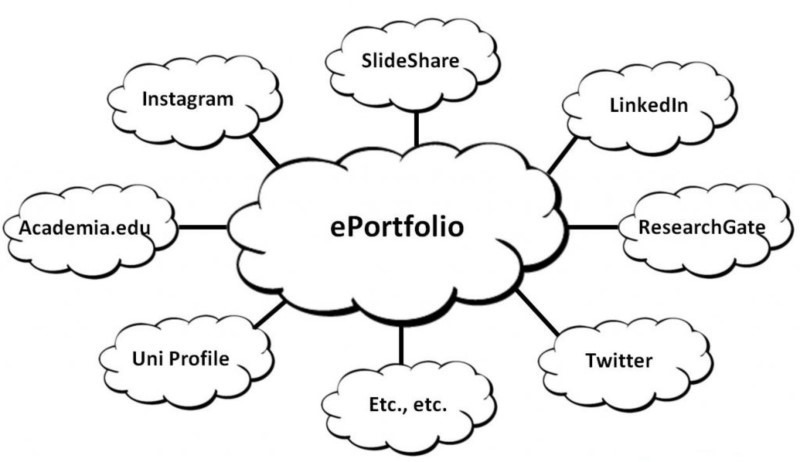A recent sector scan across Australasian universities conducted by the Australasian Council on Open, Distance and e-Learning (ACODE) found the variable uptake of ePortfolio tools across the university sector. Although many universities now have well-established ePortfolio systems in place, and have had for many years, others are still grappling with, or slowly moving towards a more consistent approach to providing this institutional service for their students and staff.
It is fair to say that although ePortfolio has been on the Higher Education agenda for quite a few years now, it has not necessarily been adopted as quickly as some may have hoped. In fact, it was the dream of many, including myself, that national projects such as the Australian ePortfolio Project (2008 -2010) and more recently ePortfolios Australia would have had a more profound impact on the uptake of this tool within the sector. In some instances it has, but this dream has not yet been fully realised.
In the ACODE sector scan, conducted in September 2017, 48 Australasian universities responded. This represented all major Australian and New Zealand universities and one from Fiji. The scan asked these institutions to identify which centrally supported ePortfolio tool they were using. This does not mean that this was the only tool the institution was using, rather it was the main tool they were using, thereby attracting some broader institutional support. In some instances, multiple tools were being used, usually in different schools or faculties to meet a particular, or perceived need. So although the institution may have had a centrally supported system, others (departments and often individuals) within the university were bypassing this for other (non-supported) solutions. This is not necessarily a problem, but it does point to the fact that the centralised system may not necessarily be fully hitting the mark, either that, or the functionality of the tool is not understood well enough by the staff and thereby the students.
Of the 48 institutions: 18 (38%) were using the Mahara open source tool; 10 (21%) were using Pebble Pad; 6 (13%) using the portfolio tool in their Blackboard LMS; 3 (6%) were using the portfolio tool in Bright Space (D2L) LMS; 2 were using Google; 1 each using Chalk & Wire and Career Hub; and 7 (15%) had no centrally support ePortfolio. In nearly all cases, those institutions that had no centrally supported tool, were currently trialling some different options.
Not only did the sector scan identify the products used, in many cases this was accompanied by a disclaimer, such as ‘but we are trialling X’ or ‘different schools have different requirements, so we can’t get any agreement’. So, although the above is simply a product list, there are implications that can be drawn from this, particularly when we look at some of the tools being used, and the functionality (or otherwise) of these tools.
Anecdotally, this is partly to do with how higher education is embracing newer forms of technology and how the role of the commercial marketplace is changing. This is seen in the plethora of social media tools that can now slot (although not comfortably) into this virtual learning environment space (such as LinkedIn and a range of efficacious self-authoring website tools sites (such as WordPress , Weebly ,and Wix making it possible for students and staff to quickly develop an online presence. As the functionality of these newer tools improve, some within our institutions are seeing the potential for these tools to contribute significantly to learning and teaching. Of course, this only serves to exacerbate the perceived divide between different academic disciplines requiring different functionality, and preventing an institutional consensus from being formed (if that is still desirable).
I actually think we are seeing a shift, or evolution in the ‘first wave’ of ePortfolio systems. This is not unlike the gradual implementation of the Learning Management System (LMS), or lecture capture systems, as the future of ePortfolio use in higher education is tied to the changing nature of teaching. Change is occurring in the practices of instructors and programs, as well as change in the use of new technologies and change in the value of a student owned portfolio. It is important to note that change is difficult for some, but necessary.
Before we had such systems, I personally used a website that I developed in html to be [what I now call] my ePortfolio .In those days, and I’m only talking 10 years ago, it was the only mechanism I had to represent myself professionally to a wider audience. Today I think we want an ePortfolio to do many more things than simply be a series of static webpages, and so it comes back to the definition of what an ePortfolio is.
If we are to take the definition of an ePortfolio as being a digital repository where evidence of an individual’s personal, educational or professional pursuits may be stored and showcased (ePortfolio Hub, 2017 ), then theoretically this could be done in many ways and with many tools. However, in the university context, it may be seen to do a bit more than this. An ePortfolio may also be seen to support a change in the way many institutions are approaching their learning and teaching, or as Batson (2011) calls it a ‘new epistemology of learning’, which requires a level of institutional commitment to how they may house important and sometimes confidential data.
An example of this is seen in the way ePortfolio can support a ‘flipped classroom’ methodology, where a learner-centred pedagogy can focus on an individual’s learning experiences, to encourage independent thought and reflective practice, ultimately allowing learners to apply existing knowledge to new contexts and adapt this to new environments. However, this is not information that may be suitable for public perusal as it quite often contains sensitive information, such as reflections and private assessment items. On the other hand, ePortfolios can facilitate “a shift towards deeper learning that will link learner autonomy, graduate attributes and real-world experiences to help students transition to the workplace” (Slade & Hallam, 2016). In these cases, it may be in the best interest of the student to make this information viewable to a select group of people – potential employees for example.
This is clearly a dynamic space, and given the need for some level of discretion around one’s profile and personal data, as we look to the future, we see the need for our centralised university systems to offer both a level of security, but also for them to have the ability to engage with a whole range of external, more public systems. These may be software as a service (SaaS) or self-hosted, or simply commercial. This applies equally to the learning management system (LMS), content management system (CMS), and ePortfolio, not to mention staff and student reward and recognition systems. But I would argue that it is particularly important for the ePortfolio. With the rise of digital credentialing, blockchain certs and badging, there is an increased awareness of the portability and validity of one’s online persona and professional presence that transcends, or extends past the now obligatory, although simplistic, LinkedIn profile.
For example, on a personal level, all roads lead to Rome (or in this case my ePortfolio). My former university allows me (as an Alumnus) to keep my ePortfolio for life, if I keep up my profile with them (keep my password up-to-date), so this has allowed me to make my ePortfolio the centre of my professional profile. So I link to my ePortfolio from all my other professional and social media sites, my Twitter , my SlideShare , my ResearchGate ,etc (but not Facebook). There is a really practical reason for this, it means I do not have to keep extensive profiles on all these different systems – I just need to keep one major site up-to-date and do the bare minimum on the others. But it also means I can lead people to my full profile that gives them a fuller picture about who I am, if they are interested (not that I expect anybody to be necessarily).
The essential ePortfolio needs to connect to other repositories and key social media sites
So what does this mean for ePortfolio companies as we move to ‘what’s next’? It means I want to be able to integrate feeds from all these types of sites and to allow for my credentials to be seamless. I would like to be able to use it as my backpack as well. If I were an institution, I would want to be able to use my site to credential student and staff learning outcomes, linkable to my student management system and staff professional development system. Why? Because that is going to make the ePortfolio usable by most, if not all the disciplines, the careers people, HR, professional accrediting bodies and most importantly -potential employees. However, at the end of the day, it is the student experience that needs to be front and centre. I believe this is the top-level issue for the ePortfolio community and it is directly tied to student success. For if they succeed, we succeed.

Michael Sankey

Latest posts by Michael Sankey (see all)
- ePortfolios in Today’s Universities - July 12, 2018
You must be logged in to post a comment.


There are no comments
Add yours